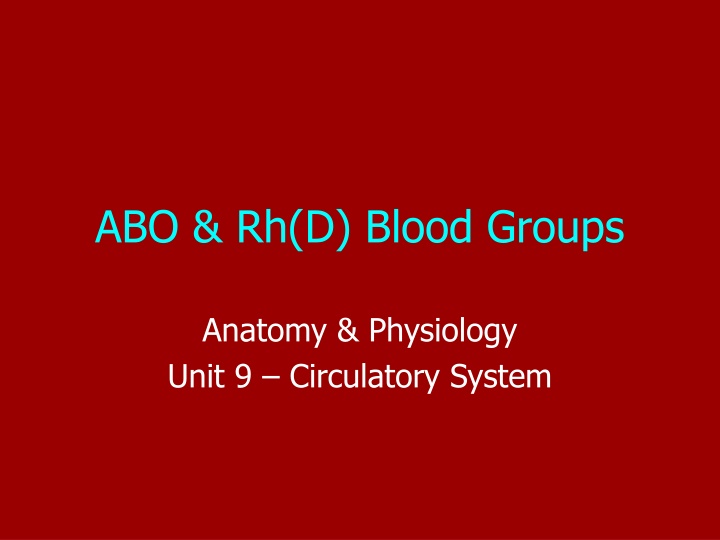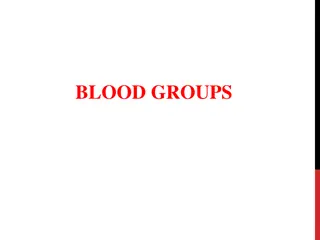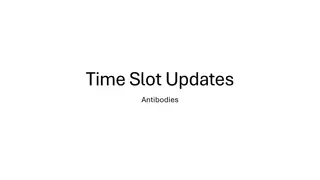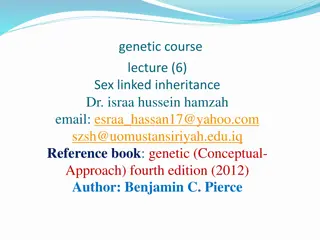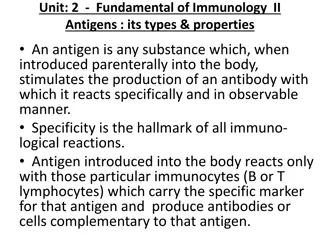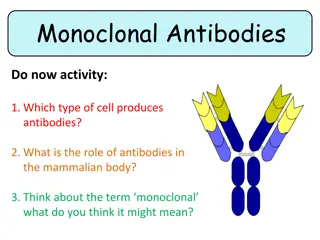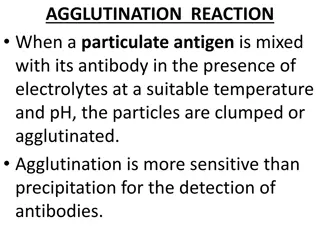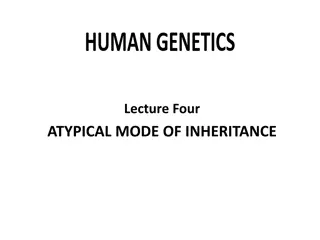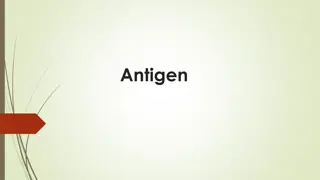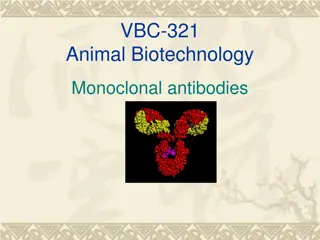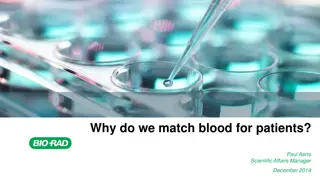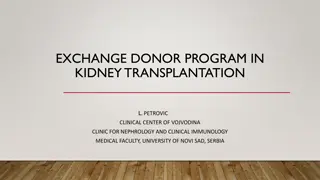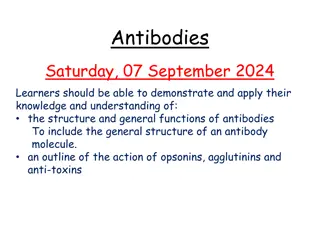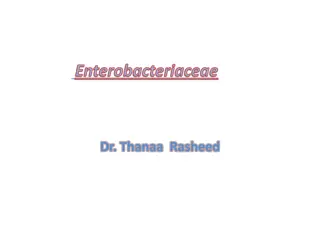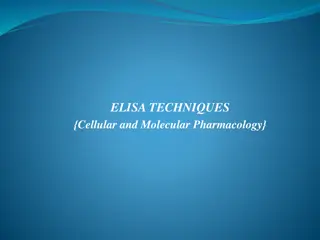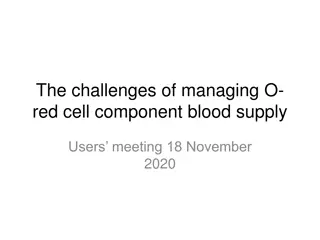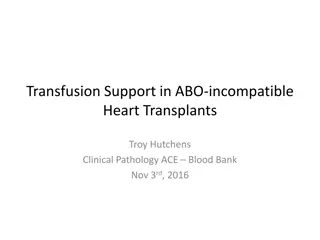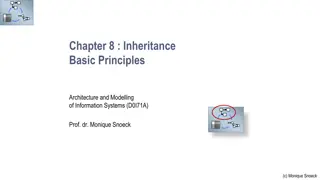ABO Blood Groups: Discovery, Antigens, Antibodies & Inheritance
A comprehensive overview of ABO blood groups covering their discovery by Dr. Karl Landsteiner in 1901, main phenotypes (A, B, AB, O), gene location, antigen structure, antibody production, inheritance patterns, typing procedures, and global distribution among various populations.
Download Presentation

Please find below an Image/Link to download the presentation.
The content on the website is provided AS IS for your information and personal use only. It may not be sold, licensed, or shared on other websites without obtaining consent from the author.If you encounter any issues during the download, it is possible that the publisher has removed the file from their server.
You are allowed to download the files provided on this website for personal or commercial use, subject to the condition that they are used lawfully. All files are the property of their respective owners.
The content on the website is provided AS IS for your information and personal use only. It may not be sold, licensed, or shared on other websites without obtaining consent from the author.
E N D
Presentation Transcript
ABO & Rh(D) Blood Groups Anatomy & Physiology Unit 9 Circulatory System
The ABO System Discovered in 1901 by Dr. Karl Landsteiner 4 Main Phenotypes (A, B, AB, O) ABO gene located on long arm of chromosome 9 ABO & Rh(D) 2
The ABO Antigens Added to Proteins or Lipids in Red Cells Substrate Molecule is H (fucose) A antigen is N-acetyl-galactosamine (GalNAc) B antigen is Galactose (Gal) A and B genes code for transferase enzymes ABO & Rh(D) 3
ABO Antibodies A and B substances very common Antibodies produced to non-self Produced after first few months of life A & B people have mainly IgM O people have IgG May fade in old age ABO & Rh(D) 4
Antigens & Antibodies Antigens on RBCs Blood Group Antibodies in Serum Genotypes A A Anti-B AA or AO B B Anti-A BB or BO AB A and B Neither AB O Neither Anti-A and anti-B OO ABO & Rh(D) 5
Inheritance of ABO Groups Allele from the mother Allele from the father Genotype of offspring Blood types of offspring A A AA A A B AB AB A O AO A B A AB AB B B BB B B O BO B O O OO O ABO & Rh(D) 6
ABO Typing Reverse Group Test plasma/serum with: Known A1 cells Known B cells Known O cells ? Known A2 cells Reactions may be weaker than cell group Cell Group Test Washed Cells With: Monoclonal Anti-A Monoclonal Anti-B Inert control Agglutination is a positive result ABO & Rh(D) 7
Distribution of ABO Groups O A B AB Population Aborigines Basques Blackfoot (N. Am. Indian) Bororo Chinese-Canton Chinese-Peking English Hawaiians Irish Mayas Navajo (N. Am. Indian) Peru (Indians) United Kingdom (GB) USA (blacks) USA (whites) 61 51 17 100 46 29 47 37 52 98 73 100 47 49 45 39 44 82 0 23 27 42 61 35 1 27 0 42 27 40 0 4 0 0 0 1 1 0 6 25 32 8 2 10 1 0 0 8 20 11 13 3 1 3 1 0 0 3 4 4 ABO & Rh(D) 8
Distribution of the A allele ABO & Rh(D) 9
Distribution of the B Allele ABO & Rh(D) 10
Distribution of the O Allele ABO & Rh(D) 11
Significance of ABO Group ABO mismatched transfusions: Rare May be life threatening Can be caused by technical or clerical error Intravascular haemolysis More severe in group O patients ABO & Rh(D) 12
Universal Donor and Recipient Universal Donor Group O Carries no A or B antigens Packed and processed units have little antibody Universal Recipient Group AB Patient has no anti-A or anti-B present Cannot lyse any transfused cells Beware: other antibodies may be present Using the patient s own group ASAP will conserve resources ABO & Rh(D) 13
The Rh(D) Antigen RH is the most complex system, with over 45 antigens Discovered in 1940 after work on Rhesus monkeys Subsequently discovered to be unrelated to monkeys RH gene located on short arm of chromosome 1 ABO & Rh(D) 14
Simple Genetics of Rh(D) 86% of caucasians are Rh(D) pos The antithetical antigen d has not been found The d gene is recessive: Dd, dD, DD, persons are Rh(D) pos Only dd persons are Rh(D) neg ABO & Rh(D) 15
Distribution of Rh(D) Types Population Rh(D) pos Rh(D) neg Caucasian 86% 14% African- American Oriental 95% 5% >99% <1% ABO & Rh(D) 16
Significance of Rh(D) 80% of Rh(D) neg persons exposed to Rh(D) pos blood will develop anti-D Anti-D can also be stimulated by pregnancy with an Rh(D) positive baby Sensitisation can be prevented by the use of anti-D immunoglobulin, antenatally and post natally Rh(D) neg females of childbearing potential should never be given Rh(D) positive blood products ABO & Rh(D) 17
Inheritance ABO & RH genes are not linked ABO & Rh(D) type are inherited independently For example: An A Rh(D) pos mother and a B Rh(D) pos father could have an O Rh(D) neg child ABO & Rh(D) 18
Inheritance of ABO and Rh(D) Mother Father Group A AO Group B BO Rh(D) pos Dd Rh(D) pos Dd Group A AO Group B BO Group O OO Rh(D) pos Dd Rh(D) pos Dd Rh(D) neg dd ABO & Rh(D) 19
